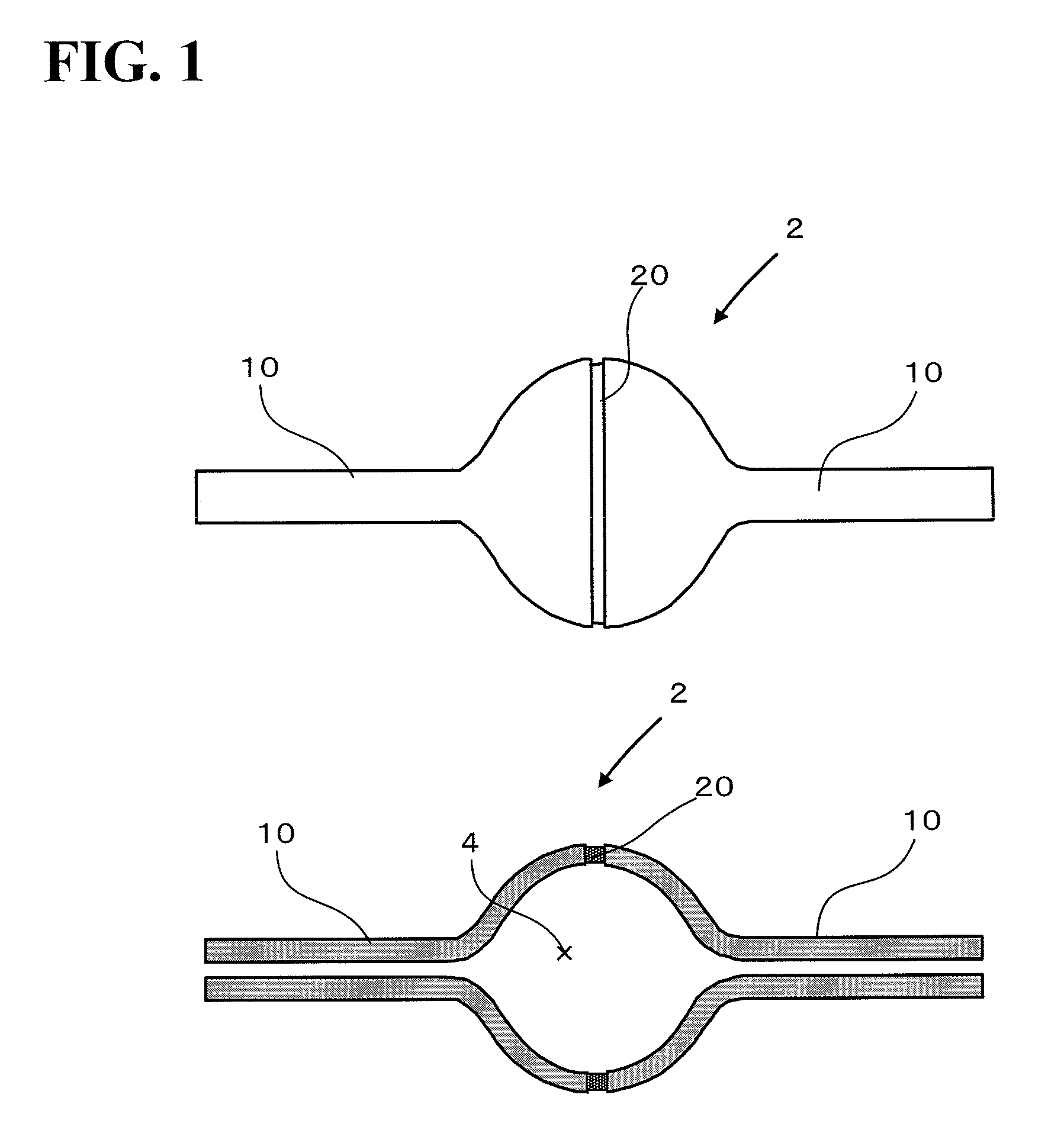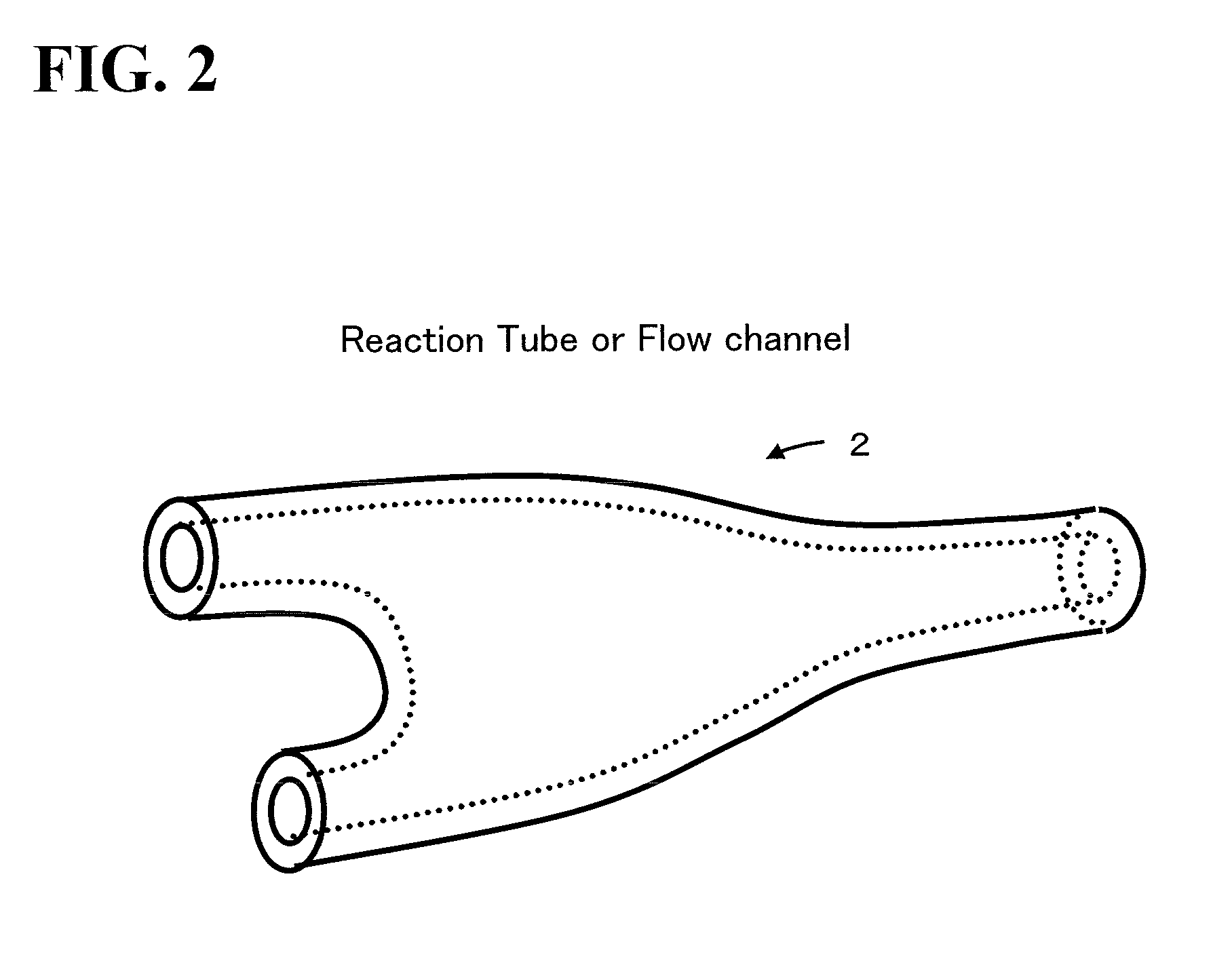Sintered body, arc tube, and manufacturing method of sintered body
- Summary
- Abstract
- Description
- Claims
- Application Information
AI Technical Summary
Benefits of technology
Problems solved by technology
Method used
Image
Examples
example 1
[0101] In this example, an arc tube was produced as a sintered body. A molded body constituting the sintered body was formed by the method described below. That is, 100 parts by weight of alumina powder (trade name: Alumina AES-11C, manufactured by Sumitomo Chemical Company) and 0.025 parts by weight of magnesia, as starting material powder, 24 parts by weight of dimethyl malonate as a dispersion medium, 2 parts by weight of Bayhydur 3100 (trade name, manufactured by Bayer-Sumitomo Urethane K.K.) as a gelling agent, 1 part by weight of MALIALIM AKM0351 (trade name, manufactured by NOF Corporation) as a dispersant, and 0.2 parts by weight of triethylamine as a catalyst were mixed. The resulting slurry was poured into an aluminum alloy mold, and the cast slurry was left to stand at room temperature for one hour and then at 40° C. for 30 minutes to carry out solidification, followed by mold releasing. The solidified pieces were left to stand at room temperature and at 90° C., respectiv...
example 2
[0108] In Example 2, an arc tube was produced as a sintered body. A molded body constituting the sintered body was formed by the method described below. That is, 100 parts by weight of alumina powder (trade name: Alumina AKP-20, manufactured by Sumitomo Chemical Company) and 0.025 parts by weight of magnesia, as starting material powder, 27 parts by weight of Chemrez 6080 (trade name, manufactured by Hodogaya Ashland Co., Ltd.) and 0.3 parts by weight of ethylene glycol, as a dispersion medium, 4 parts by weight of SBU Isocyanate 0775 (trade name, manufactured by Bayer-Sumitomo Urethane K. K.) as a gelling agent, 3 parts by weight of MALIALIM AKM0351 (trade name, manufactured by NOF Corporation) as a dispersant, and 0.1 parts by weight of Kaolizer No. 25 (trade name, manufactured by Kao Corporation) as a catalyst were mixed. The resulting slurry was poured into the same mold as that in Example 1, and the cast slurry was left to stand at room temperature for one hour and then at 40° ...
example 3
[0112] A sintered body A of Example 3 was obtained as in Example 2 except that the amount of magnesia in the bonding slurry was 0.020 parts by weight. The thermal shock resistance of the sintered body A of Example 3 was evaluated by the water quenching method. As a result, no cracks occurred in the sintered body A even at 150° C. Furthermore, with respect to the sintered body A, after the evaluation of thermal shock resistance, the amount of He leak at the middle part was measured by a He leak detector. The amount of leak was 1×10−8 atm·cc / sec or less. Furthermore, in Example 3, the average grain diameter in the sintered molded body portion was 24.3 μm, and the average grain diameter in the vicinity of the center in the width direction of the sintered junction portion was 47.5 μm. The average grain diameter in the vicinity of a position at a distance of 150 μm from the center in the width direction of the sintered junction portion toward the sintered molded body portion was 34.1 μm....
PUM
| Property | Measurement | Unit |
|---|---|---|
| Length | aaaaa | aaaaa |
| Fraction | aaaaa | aaaaa |
| Width | aaaaa | aaaaa |
Abstract
Description
Claims
Application Information
 Login to View More
Login to View More - R&D
- Intellectual Property
- Life Sciences
- Materials
- Tech Scout
- Unparalleled Data Quality
- Higher Quality Content
- 60% Fewer Hallucinations
Browse by: Latest US Patents, China's latest patents, Technical Efficacy Thesaurus, Application Domain, Technology Topic, Popular Technical Reports.
© 2025 PatSnap. All rights reserved.Legal|Privacy policy|Modern Slavery Act Transparency Statement|Sitemap|About US| Contact US: help@patsnap.com



